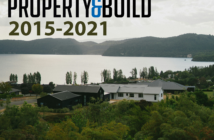For many in the sector, 2024 was not a great year and 2025 is not looking that amazing either.
Although 2025, is likely to be a bit better, the macro-economic and political environment is not showing evidence of any major enhancement.
Dr Coyle has created first a pragmatic outlook of what 2025 is likely to deliver and an optimistic outlook of what 2025 could look like if the stars aligned. The first is the perspective of a realist (pragmatist) and the second is the perspective of an idealist (optimist)
2025: The pragmatic view
1. We continue to tumble in the boom and bust cycle
2024 was certainly a bust for many parts of the construction sector.
The HERA levy, which is legislated under the Heavy Engineering Research Levy Act, 1968, is a reliable indicator of sector activity (at least in the segments that use structural steel, such as multi-storey residential, commercial and bridges).
In June 2024, we experienced the lowest levy level of any month in more than 10 years.
Boom and bust cycles are a pattern that is pretty consistent, and which we are not really learning how to avoid through planned, transparent and sustainable infrastructure investments.
It is an entrenched cycle. It is also multi-faceted and, so far, successive governments have not made the connection between pipeline, workforce development, training and regulatory interventions (including immigration).
The consequence is that in the bust, which we are certainly in, there is a significant reduction in the employment of our skilled workforce. Then, in the boom, we no longer have the available skilled workforce available to meet demand. They have mostly gone offshore.
Combine a construction bust with an inexplicable proposed “reform” of the Vocational Education System introduced by the Hon Penny Simmonds, Minister for Tertiary Education and Skills in 2024, and things are not looking good for the future of our sector.
The link between boom and bust cycles and instability in our vocational education system means that looking ahead (possibly in 2026), construction-related manufacturing could experience an unprecedented skilled labour shortage when the market recovers.
Our industry is reliant upon skilled apprentices and concerningly, at the moment, there doesn’t seem to be a lot of government support for work-based learning appearing within the planned “reform”.
2. Talent loss and talent latency
The construction and infrastructure sectors are likely to contend with an ongoing skilled workforce shortage. This loss of talent is likely to create a persistent labour gap.
It does also present the opportunity to look elsewhere for these skills. The easiest place to look is at home.
Hence, it is likely that we will see a strong investment in growing the latent talent already within the sector. This includes developing our people with the skills required for a digital and automated future, as well as the “soft skills” required to make businesses sustainable and resilient, such as people, business and financial management.
Tasks like welding, bricklaying, and equipment operation are becoming increasingly automated, necessitating upskilling programs for the workforce. By 2025, training initiatives aimed at equipping workers with the skills to manage and operate advanced machinery will be crucial to bridge the gap between innovation and workforce readiness.
3. Chat-GPT is the gateway to AI comfort
I recently used the Chat-GPT chatbot about options for a sick family member. I was surprised when it not only gave me the information that I was seeking, it also delivered it an empathetic way.
I felt reassured in a time of distress. It was like I was getting news from a confident, knowledgeable and empathetic doctor.
I actually had more confidence in the bot as I knew it had more resources at hand than the doctor.
This is revolutionary in terms of the trust that can be created between human and bot.
No wonder then that over 70% of academics in Australia are already using AI.
Through our relationship with the Australian Composites Manufacturing CRC, HERA is involved in some world leading research related to AI in manufacturing and quality assurance.
We have seen how quickly this technology has progressed and are already exploring ways to develop novel AI models for verification and consenting support.
What we are also seeing is that there is a strong lack of understanding of how impactful AI will be on our sector and how rapidly it is advancing.
We think that Chat-GPT is a gateway to that realisation. Users of Chat-GPT can see it evolving. With me, I was shocked at how the “omni” AI system introduced to Chat-GPT in May 2024 made my experience using it so different (with the introduction of empathy).
Leveraging the experience and comfort with Chat-GPT can be a way for the sector to take the first steps to broader AI familiarity and comfort.
It can help the sector to understand the potential opportunities that AI offers and to start to incorporate it more into business planning.
At the very least, AI should be appearing on business risk registers as a potential disruptor, data risk and workforce skills gap.
4. Focus on low-carbon is sectorally driven and remains focused on embodied carbon
With acknowledgement that we are in a climate crisis, there is a need to immediately decarbonise our built environment. The current focus on reducing embodied carbon (essentially the amount of carbon emitted during construction, maintenance and demolition of a building) is likely to continue in 2025.
With MBIE essentially moving away from the proposed mandatory reporting of carbon envisaged in the Building for Climate Change, there is unlikely to be a strong regulatory incentive to reduce carbon in the built environment. MBIE’s Building Performance has now “re-branded” Building for Climate Change as the Climate Change Work Programme. Despite being labelled a “programme”, there are not any obvious related measures or activities. Presumably the Government has shied away from the more clearly articulated activities of Building for Climate Change because of perceived affordability (both for Government and the sector).
Given that the sector largely supported the Building for Climate Change program, it will now be up to the sector to drive its intended outcomes. Accordingly, there is unlikely to be a shift to greater consideration of operational carbon, the impact of deferring carbon emissions at end of life, or the opportunity to reduce carbon through retrofitting our existing building stock (e.g. with heatpumps). This is because sector-driven change is likely to be much slower than regulatory driven change.
2025: The optimistic view
1. We exit the boom and bust cycle
It would certainly help the sector if there was a bilaterally supported pipeline of national infrastructure projects, with a secured budget allocation, that were consciously timed to ensure stability in the sector. This is the aim of Te Waihanga (New Zealand Infrastructure Commission) National Infrastructure Plan (NIP).On 5 November 2024, the Infrastructure Commission released a discussion document outlining a proposed 30-year plan. The plan consists of four components:
- An Infrastructure needs assessment, providing an assessment of future national infrastructure needs (and capability to fund them) over the period 5-30 years
- A national infrastructure pipeline, which will provide a national view of upcoming projects in the next ten years
- An infrastructure priorities programme which will involve a structured independent review of unfunded projects and initiatives
- Priority reforms, which will improve the prioritisation, delivery and maintenance of national infrastructure.
The plan is due mid 2025 and has apparent bipartisan support. However, there needs to be joined-up thinking across the government on how to solve this challenge.
For example, having a pipeline of projects isn’t going to be that helpful if we still don’t have the ability to re-build our workforce.
A cross-portfolio approach is required. It would be great to see a joined-up approach connecting initiatives across, at the very least, Infrastructure (Minister Bishop), Construction (Minister Penk), Tertiary Education and Skills (Minister Simmonds) and Manufacturing (Minister Bayly) portfolios in a unified sectoral plan.
To illustrate the importance of joined-up thinking, we need only look at the proposed vocational education reforms. Work-based learning is critical to many trades within our sector and the proposed changes would significantly impact funding allocations towards work-based training and support.
This is a result of Ministers not working together across portfolios to ensure that there is joined up thinking. It is a likely result of a 90-day plan process that encourages a focus on delivering short-term outcomes and competitiveness across Ministries. Hopefully, it will not result in the demise of work-based learning and out sector’s ability to develop a sustainable workforce.
2. We invest in sectoral attractiveness
This is not going to be comfortable for all. It means we will have to think differently. Businesses will need to think more about how to:
- Retain an ageing workforce. This is likely to require a focus on upskilling and matching older staff with newer recruits to transfer knowledge (both ways);
- Attract younger workers. Younger workers have different expectations of work. They may expect more flexible work, greater use of technology, corporate social responsibility initiatives and quite frankly may ask for more than we are used to giving;
- Recruit from outside of the sector. This means that we will need to strongly articulate the benefits of our sector and overcome many of the current perceptions and misconceptions of construction and infrastructure careers. For example, despite our sector offering so many diverse career opportunities, a report released in October 2024, shows that only 20% of respondents were able to identify more than four occupations in construction and infrastucture;
- Develop partnerships with universities and vocational training providers. There wil be increasing competitiveness for trained graduates of both vocational and university education, and this may mean developing relationships with key advisors and students before they complete their studies; and
- Build cultural competencies and inclusive work environments. Both Hanga-Aro-Rau and Waihanga Ara Rau, the Workforce Development Councils (WDCs) for: 1) Manufacturing, Engineering and Logistics; and 2) Construction and Infrastructure (respectively) have identified the importance of attracting and retaining, Māori, Pacific, women and the disabled workforce. This will require businesses to think more about how their work environment is culturally and physically safe for these groups.
3. We commit to low-carbon lifecyles and circularity of construction materials
Construction and demolition waste makes up to 40-50 percent of Aotearoa New Zealand’s total waste going to landfill. This has a significant impact on carbon emissions, but also a broader environmental impact. If we want to solve the climate crisis, we need to reduce emissions now and also in the future. We also need to be able to multi-task when it comes to environmental sustainability and not take our eyes off other key issues, such as water quality, habitat loss, and resource limitations.
This requires full lifecycle thinking (i.e. beyond manufacturing carbon to consider operational and end-of-life emissions), as well as circularity of materials. We need to find ways for our materials to have multiple lives and for our built environment to have multiple uses and lives.
Findings of a 2023 systematic literature review of circular economy in construction highlighted the significance of:
- encouraging the use of recycled materials by enhancing economies of scale;
- the need for regulatory bodies and construction businesses to step in to achieve circularity in construction;
- the impact of supply chain complexities in minimising carbon emissions; and
- the necessity of investing in training for the construction industry (Illankoon and Vithanage, 2023).
HERA, through support from the Building Research Levy and the Heavy Engineering Research Levy, developed a low-carbon circular design hierarchy and framework. We used these to develop specific guidance for low-rise commercial buildings. The life cycle assessment (LCA) in our case study showed that a 57% reduction in carbon could be readily achieved through simple design tweaks. Widespread adoption of HERA’s low-carbon circular design hierarchy could lead to significant carbon reductions in our built environment, not only now but also in the future when new builds are at the end of the life. This means that there is a significant opportunity for our sector to make a significant contribution to achieving our national greenhouse gas reduction targets.
4. We embrace mātauranga Māori as a core part of what makes construction unique to the Aotearoa New Zealand context
At the inaugural Construction 4.0 Conference in November 2024, associate professor f Fleur Palmer (Te Rarawa, Te Aupōuri) from AUT presented the Ngākopa Construction 4.0 Takarangi Diagram. This diagram overviews ways in which the sector can consider and incorporate mātauranga Māori (Māori knowledge) in practice.
Fleur is the Mātauranga Māori Theme Leader and Science Co-Leader (with Prof Robert Amor) on HERA’s $10.3 million Endeavour funded project focused on Construction 4.0.
The Ngākopa Construction 4.0 Takarangi Diagram presents ways in which we can:
- Acknowledge whakapapa (geneology), including the whakapapa of building materials (e.g. Mataoho/Rūaumoko for metals);
- Respect linkages to ngā atua (ancestors) – linking construction materials and approaches (eg innovation, strategic thinking
- Incorporate principles such as kaitiakitanga (guardianship), mauritanga (respecting the lifeforce and vitality of all things, including inanimate objects such as building materials and ecosystems); and
- The link back to the separation of Ranginui (Sky Father) and Papatūānuku (Earth Mother) and prior (Ngākopa).
- This research is showing some tangible ways for both world views to co-exist in practice and for Māori world views to thrive in construction.
- Adoption of these insights would mean that we could walk around our built environment and see (and experience) that it reflects our unique historical, environmental and cultural context.
Are we ready to build a resilient future?
2025 presents both challenges and opportunities for Aotearoa New Zealand’s construction sector. While the pragmatic view highlights ongoing issues like talent loss, economic instability, and inadequate regulatory frameworks, there is significant potential for growth through strategic alignment and innovation. By embracing initiatives to integrate mātauranga Māori, and prioritise low-carbon and circular design principles, the sector can create a more sustainable, inclusive, and future-ready built environment.
The future demands a collective effort to stabilise infrastructure investment, rebuild our skilled workforce, and adopt advanced technologies like AI to enhance productivity. Through collaboration and commitment to these pathways, 2025 could mark the start of a transformative era for construction in Aotearoa New Zealand.
Dr Troy Coyle is CEO of HERA











